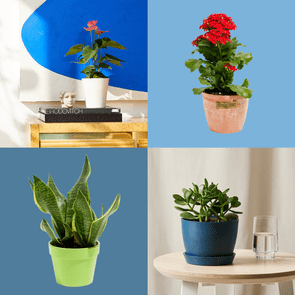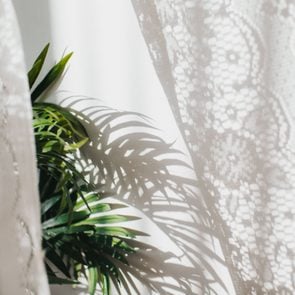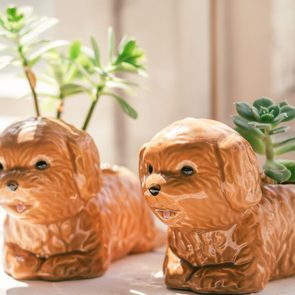How to Get Rid of Gnats
Updated: Jul. 27, 2023
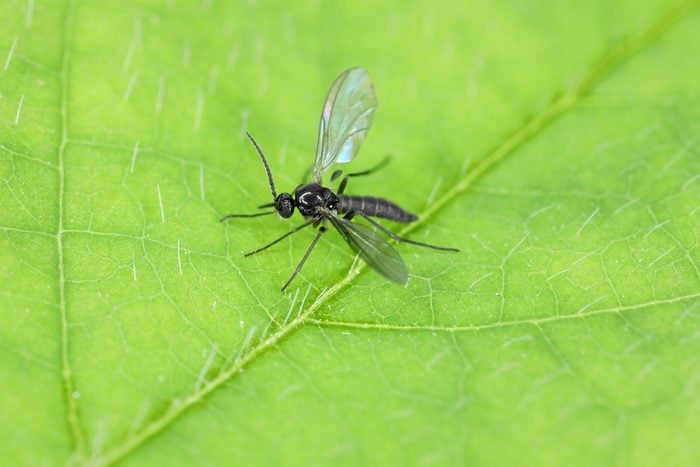
Get rid of the pesky bugs once and for all with these easy and affordable solutions
Adding indoor plants to your home is a quick, easy and affordable way to bring some life and color into your space.
However, even the most gorgeous hanging plants can have one major drawback. And nope, we’re not talking about brown tips or powdery mildew. We’re talking about fungus gnats. Though harmless to humans, these annoying pests can wreak havoc on your houseplants. Here’s everything you need to know to keep gnats away.
On This Page
What are fungus gnats?
Fungus gnats are flying insects that can easily be mistaken for fruit flies or drain flies. These tiny pests only grow to about an eighth of an inch long, are grayish to black in color and have long legs, antennae and one pair of light gray or clear wings. They aren’t harmful to humans or pets, but they can pose a danger to your houseplants. Open doors and windows are an invitation for these pesky bugs to enter your home, or you may unknowingly bring them in with an already contaminated plant. Their larvae feed on plant roots, root hairs, fungi and decaying plant material, so you’ll typically spot them buzzing around your houseplants. Speaking of fungi, here’s what it means if you see white fungus balls in soil.
What causes fungus gnats?
Fungus gnats are attracted to moist soil, which means overwatering is a common cause. In addition, you’ll also find gnats in plants that have been kept outside during the summer. Once summer is over and these infested plants are brought inside, you may notice a surge of fungus gnats, as they thrive in warm, indoor environments throughout the late fall and early winter.
Another pest that may show up in your home this fall or winter? Spiders. Read up on how to get rid of spiders for good.
Fungus gnats vs. fruit flies
Fungus gnats are often mistaken for fruit flies, though there are a few differences between the two. Unlike fungus gnats, which have long grayish or black bodies with long dangly legs, fruit flies have a rounded body that ranges from tan to black, with large, red eyes. And while fungus gnats are attracted to damp soil, fruit flies feed on ripe fruit. Don’t want to get up close and personal enough to tell which are gnats versus fruit flies? We don’t blame you. If you can’t tell the difference, here are easy ways to get rid of fruit flies.
How to get rid of fungus gnats
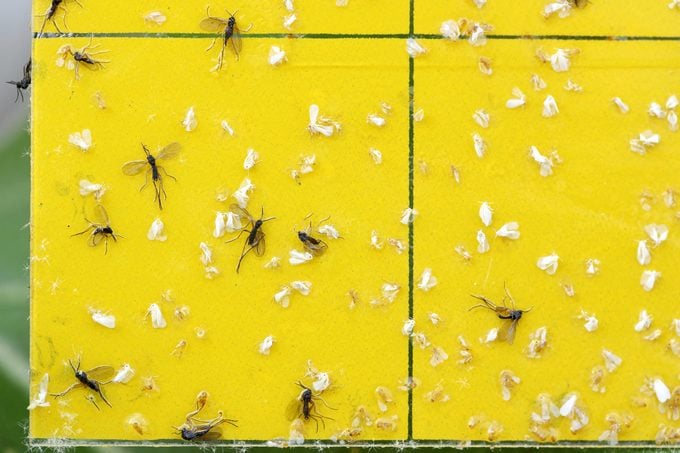
You certainly don’t want to get rid of your favorite air-purifying plants, so we’ll help you figure out how to get rid of gnats for good. Fortunately, there are plenty of DIY methods and store-bought options to eliminate these pests once and for all. Just keep in mind that the adult gnat population comes in cycles, so you’ll have to refresh your traps regularly until they’re all gone.
Apple cider vinegar, dish soap and water
This DIY trap is easy and effective when it comes to getting rid of adult gnats. Simply squirt a little dish soap into a shallow dish. Then add equal parts apple cider vinegar and water until the container is just about full. Place this trap near the base of the infected plant. Or, if the pot is big enough, place this trap inside the pot on top of the soil. The gnats will be attracted to the scent of the vinegar and fly in for a sip. Meanwhile, the dish soap works to cut the surface tension of the vinegar, causing the fungus gnats to fall in and drown.
Slices of fresh potato
Don’t have any apple cider vinegar handy? A fresh potato from your pantry will actually help trap the larvae before they turn into buzzing adults. Insert a couple of 1/4-inch slices or wedges of potato, flesh side down, into the soil. Within a few days, larvae will make their way to the potato and start feeding. Every couple of days, check under the wedges and remove any feeding larvae. Then replace the potato with fresh slices or wedges.
Hydrogen peroxide
Mix one part hydrogen peroxide with six parts water in a spray bottle. Spray on dry soil. After the initial fizzing, the hydrogen peroxide will break down into oxygen and water. This mix is harmless to your plants but deadly to fungus gnat larvae.
Garsum Yellow Sticky Traps
Sometimes a store-bought solution is best if you aren’t sure how to get rid of gnats. If you’re not into DIY traps, then try ready-to-use traps from Garsum. Place these nontoxic, pesticide-free traps in the soil around your pot. The adult gnats are attracted to the bright yellow color and get stuck in the traps. When a trap is full, simply throw it away and replace it with a fresh one.
Garden Safe Houseplant and Garden Insect Killer
This ready-to-use spray kills all stages of insects on contact, including eggs. This spray is made with a botanical insecticide from the chrysanthemum flower and is safe for use indoors. That being said, you probably don’t want to walk around your home spraying this into the air. Several users recommend spraying the top layer of soil to kill any larvae that could be lurking close to the surface.
How to prevent fungus gnats
In order to keep gnats away permanently, allow the top one to two inches of soil to dry completely between watering sessions. Dry soil will kill off any eggs or larvae that may be hiding in your houseplant. You’ll also want to re-pot your plants every so often, especially when the soil has broken down to the point where it retains too much moisture. Re-pot with a potting mix that doesn’t contain composted ingredients like processed forest products, bark fines or actual compost. Last, keep your plants free from debris. Remove any fallen leaves, flowers or fruit, since fungus gnats prefer to lay their eggs where there is plenty of decaying organic matter. If you take preventative steps before fungus gnats settle in, you may never have to learn how to get rid of gnats! Next, learn how to get rid of aphids.
Get Reader’s Digest’s Read Up newsletter for humor, cleaning, travel, tech and fun facts all week long.
Sources:
- Ortho: “How to Kill Fungus Gnats Indoors“
- Plant Talk Colorado: “Fungus Gnats“





















